Swedish Limpa Bread is a traditional Northern European bread that’s distinct in flavor — slightly sweet and subtly spiced. Locally known as ‘sirapslimpa,’ it’s perfect for breakfast or making sandwiches. Plus, you can easily make it at home!

What is limpa bread?
It’s a classic Swedish bread made of wheat and rye, slightly sweet and with a hint of fennel and anise in every bite.
Authentic limpa bread also has a contradiction in texture because while the inside of the bread is soft, the top and crust are slightly chewy.
The sweetness comes from the syrup in the dough (and on the glazing); hence, it’s also known as ‘syrup loaf’ — or ‘sirapslimpa’ locally.
It’s one of those breads where once you taste a really good one, you get why people keep making it all the time.
Jump to:
Why this bread recipe is a keeper!
- Stores well. Thanks to the syrup or molasses often in the dough, it stays moist longer than many plain breads. That sweet element helps it resist drying out fast.
- Flavor: It’s subtly sweet, spiced with anise, fennel, and sometimes cardamom. That mix gives it a warm, almost festive flavor that’s still easy to eat any time of year.
Ingredients
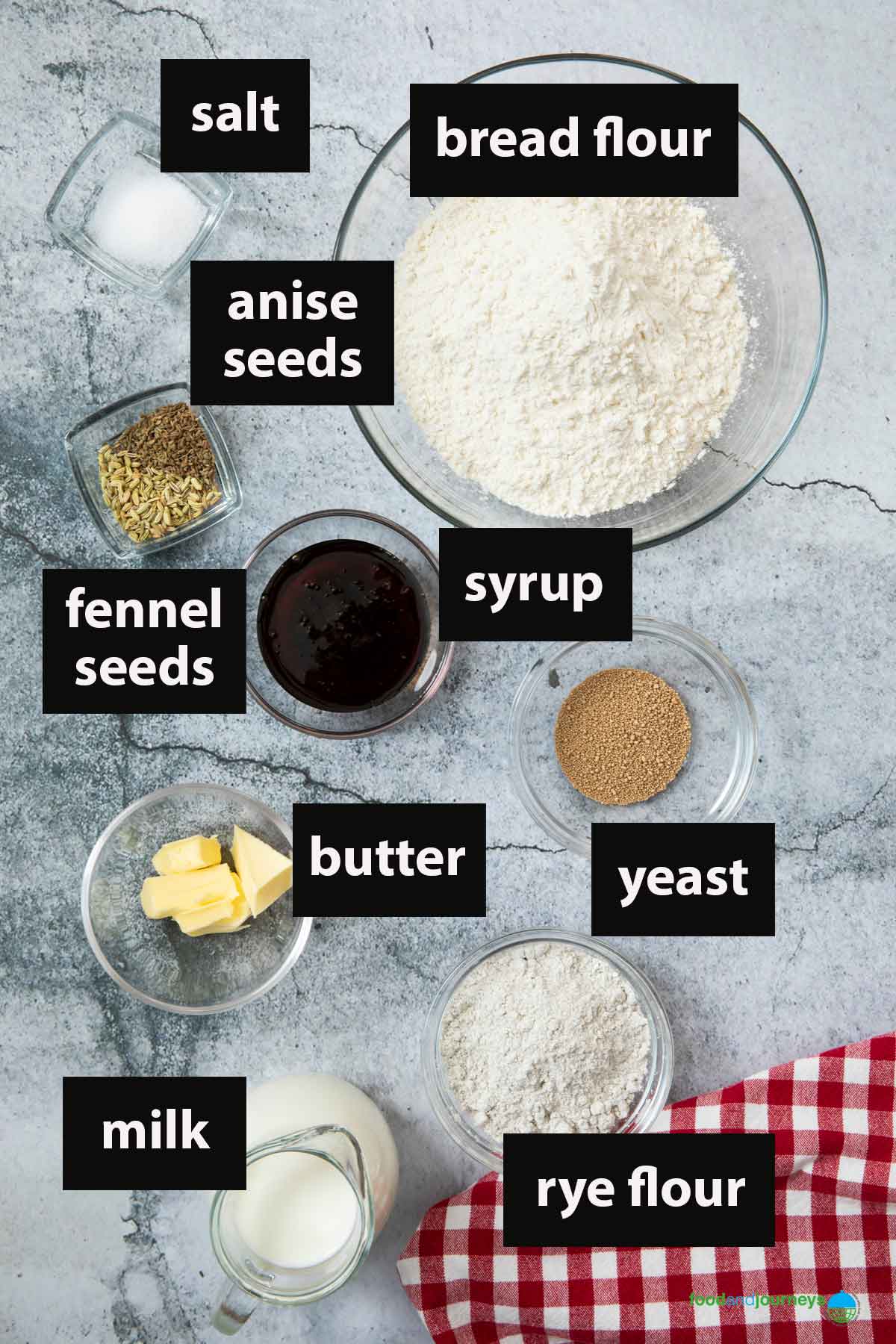
(See the recipe card below for measurements.)
- Flour – you need a combination of bread and rye flour to make an authentic sirapslimpa.
- Yeast – I always use active dry yeast when making this syrup loaf recipe.
- Salt – just use your favorite brand.
- Milk – whole cream milk is excellent for this Swedish limpa bread recipe.
- Butter – unsalted and use a bit more if you use a loaf pan (for greasing).
- Syrup – I always use ‘mörk sirap,’ or dark syrup, for making sirapslimpa at home.
- Spices – salt, fennel, and anise seeds.
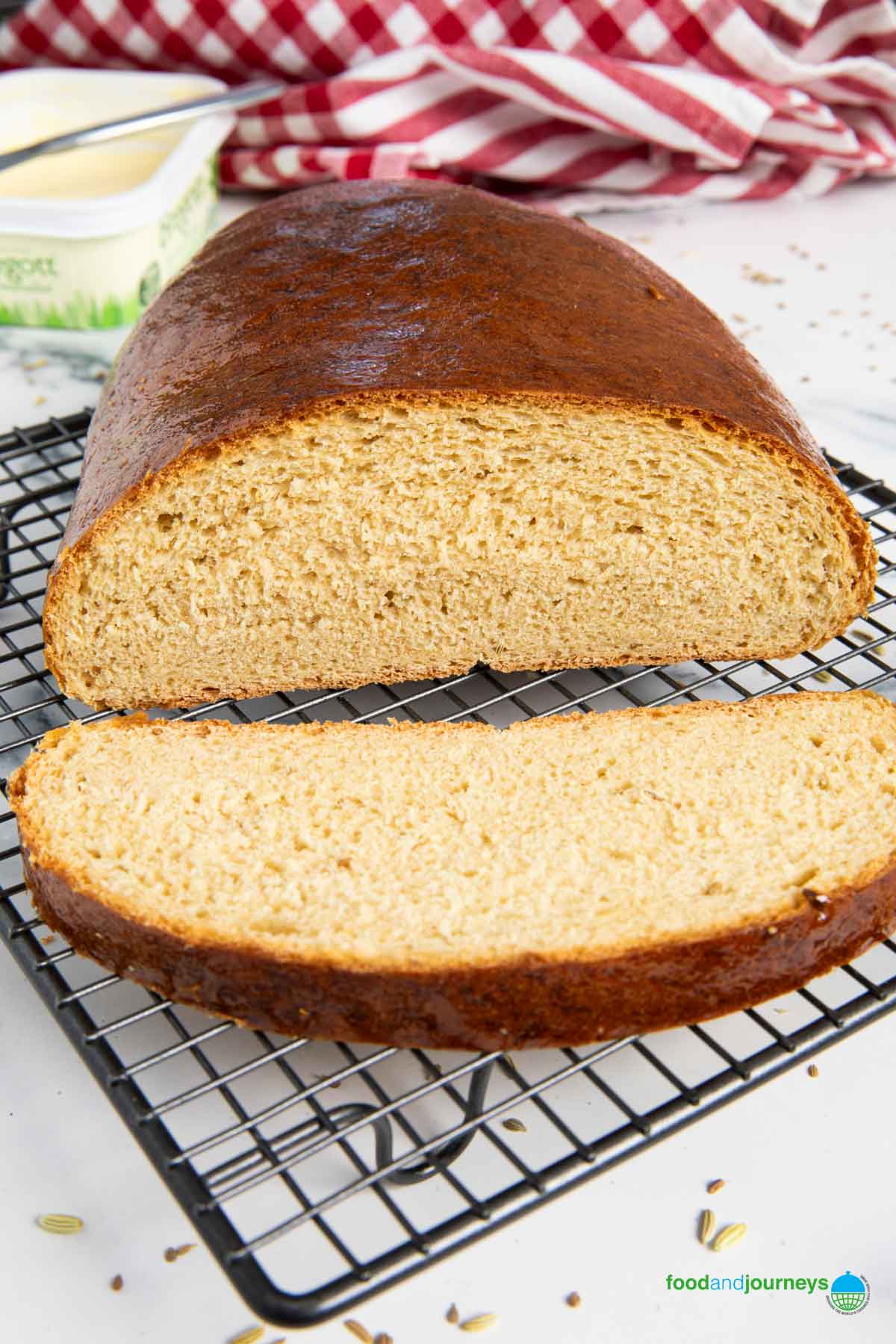
How to make limpa bread
Start by combining yeast with three-quarters cup of warm water.
Mix and set aside.
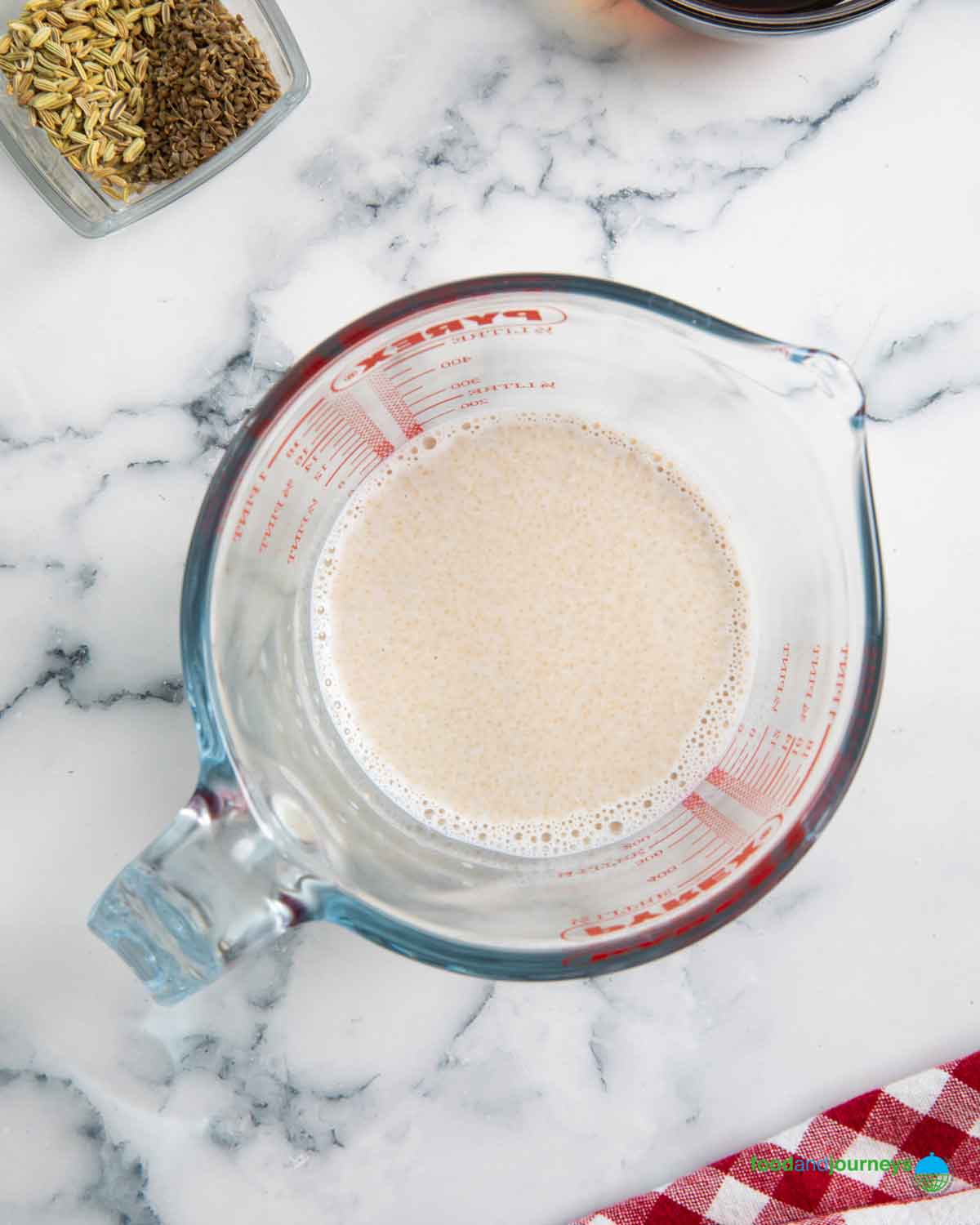
Using a small saucepan, mix butter, milk, and syrup.
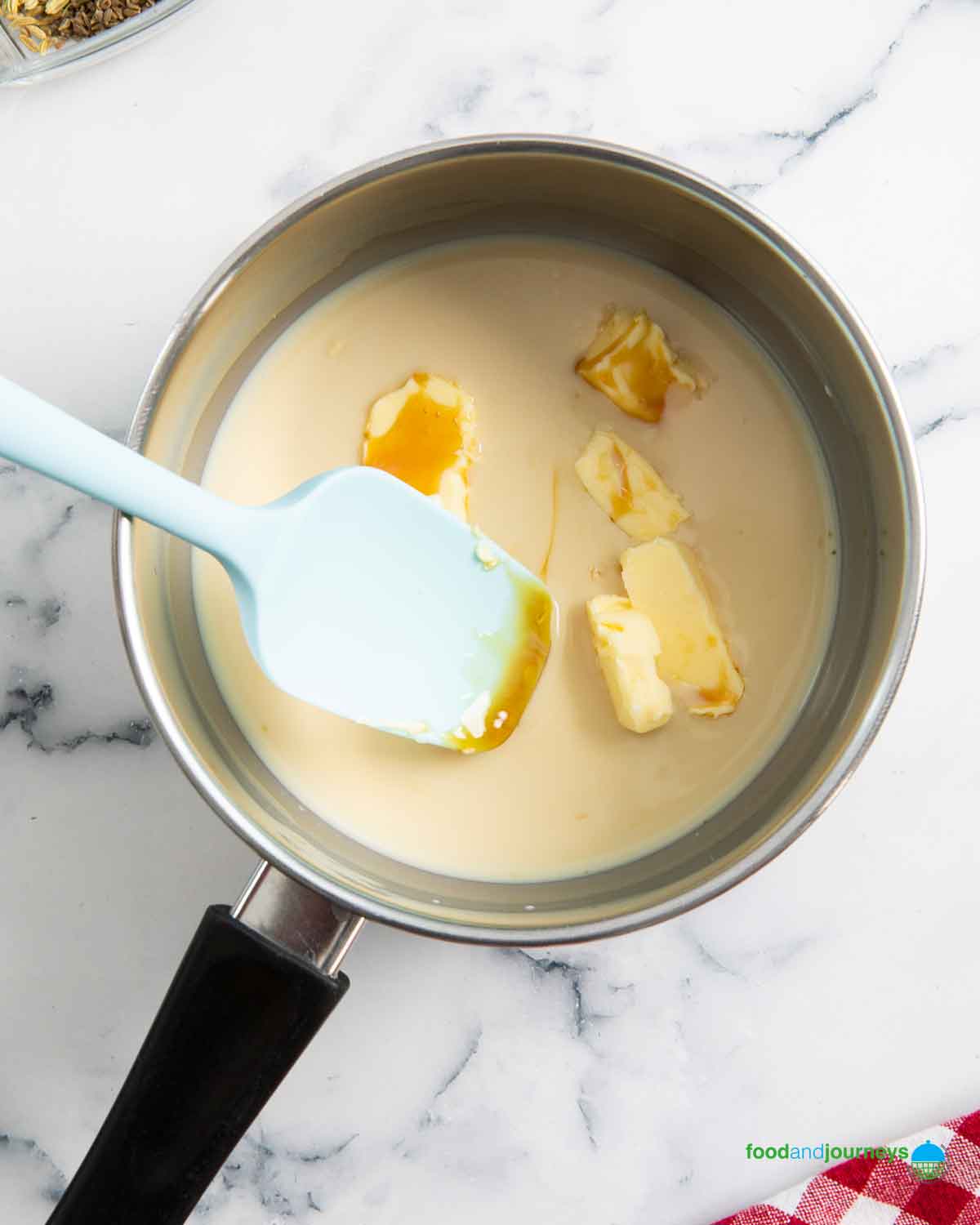
Place over low heat until the butter and syrup melt — set aside to cool.
Crush the fennel and anise seeds with a mortar and pestle.
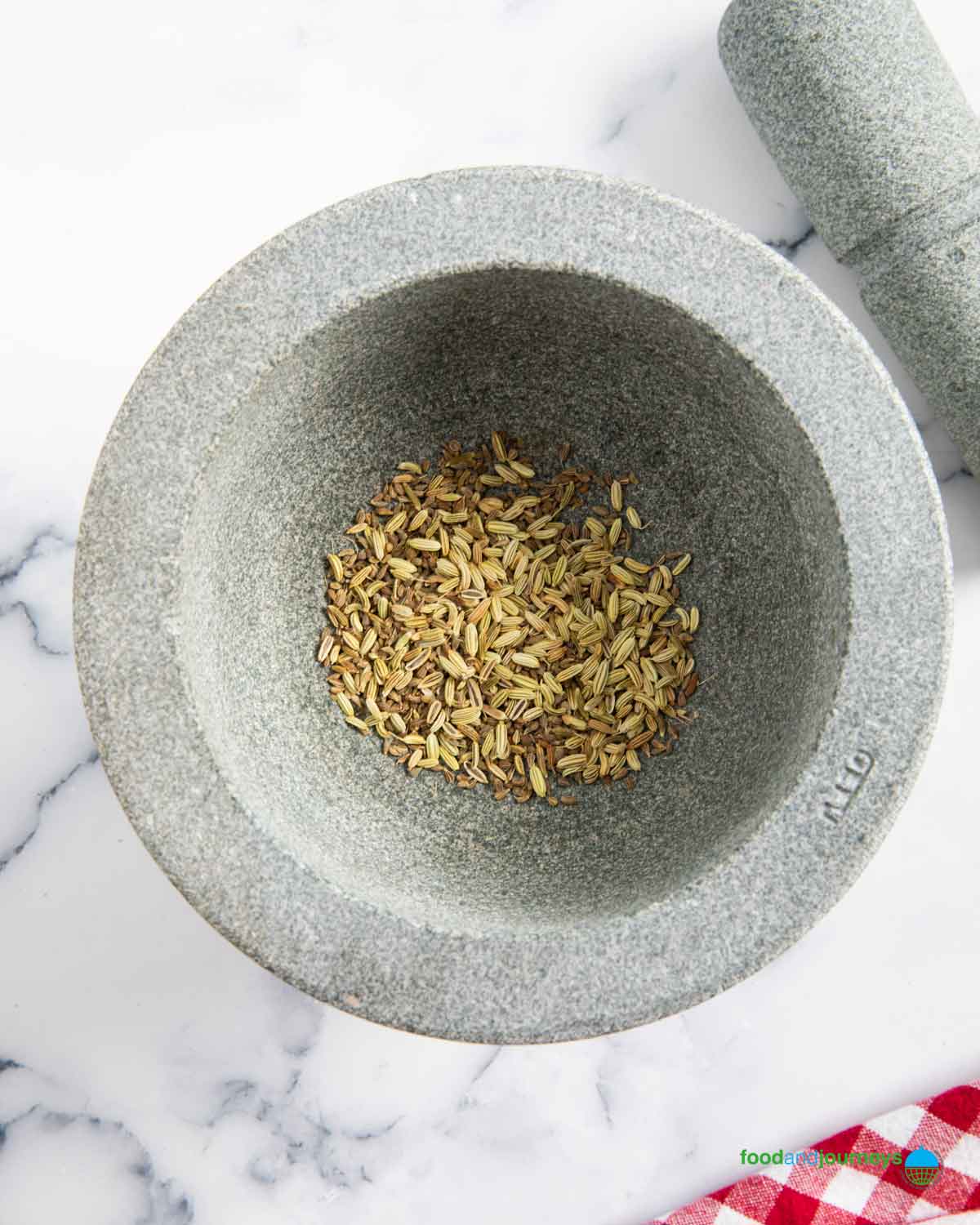
Combine the bread flour, rye, salt, and seeds in a stand mixer bowl.
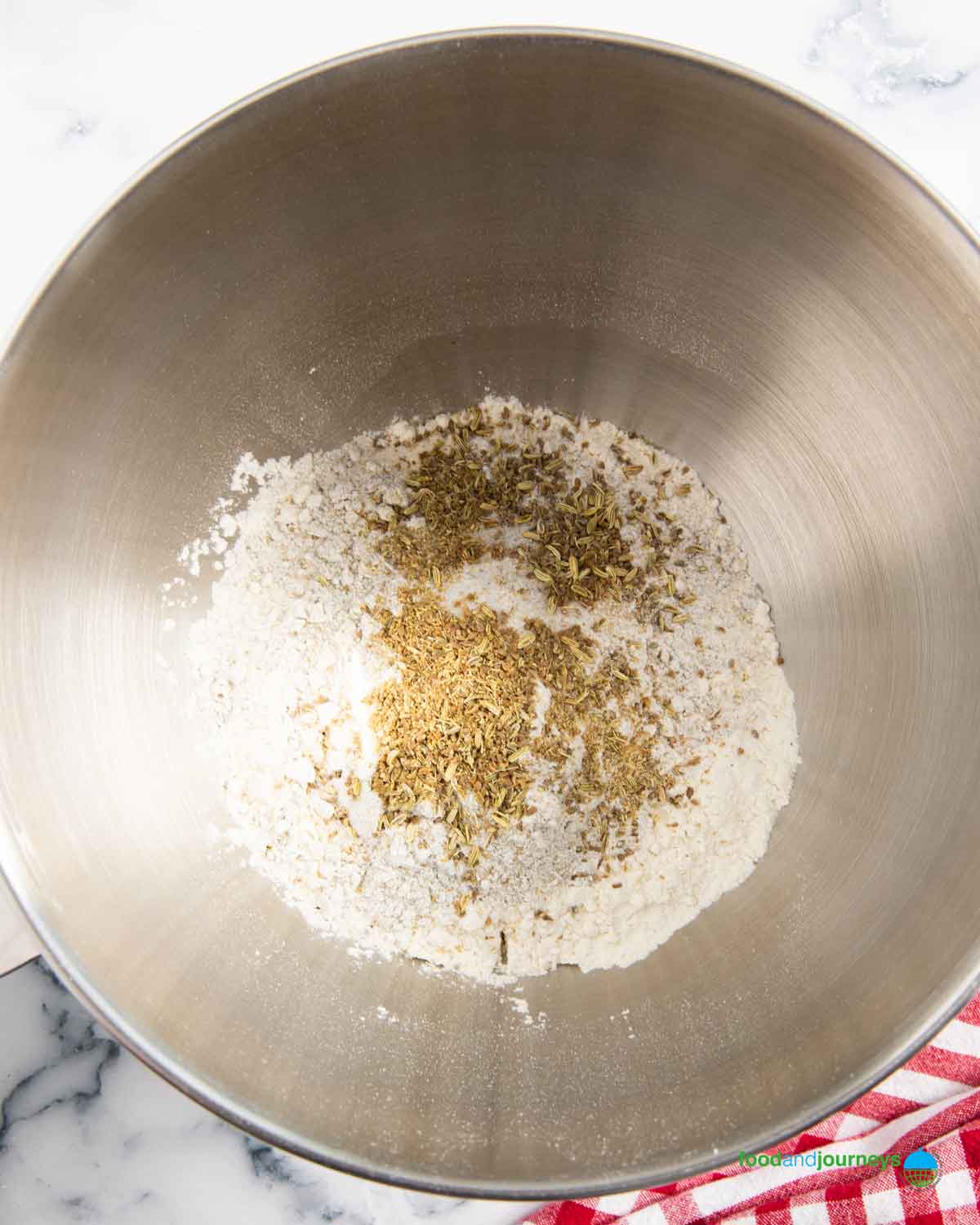
Once the yeast is foamy, pour it into the bowl with the cooled butter and milk mix.
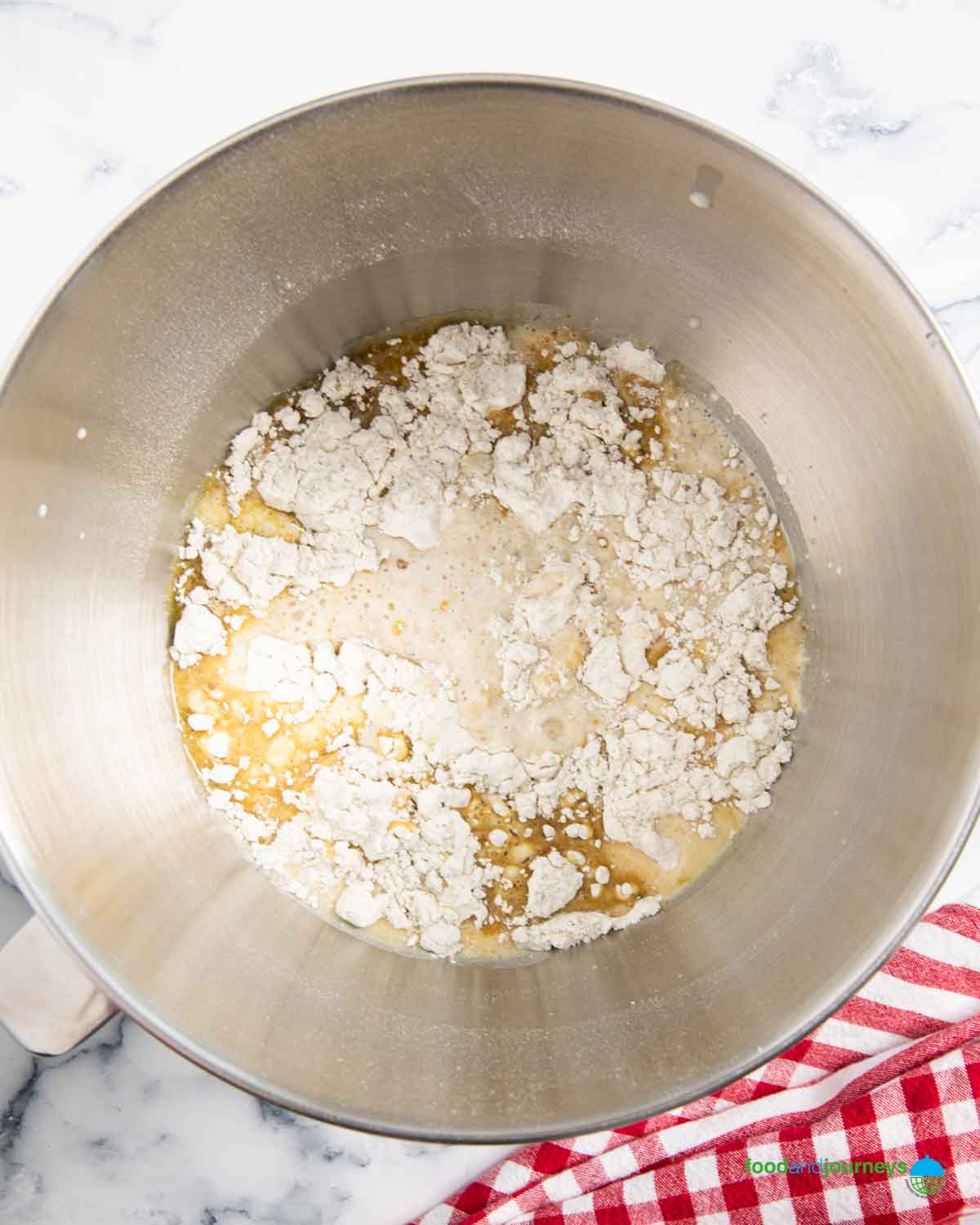
Mix and knead until you get a smooth dough.
Place your Swedish limpa dough in an oiled bowl.
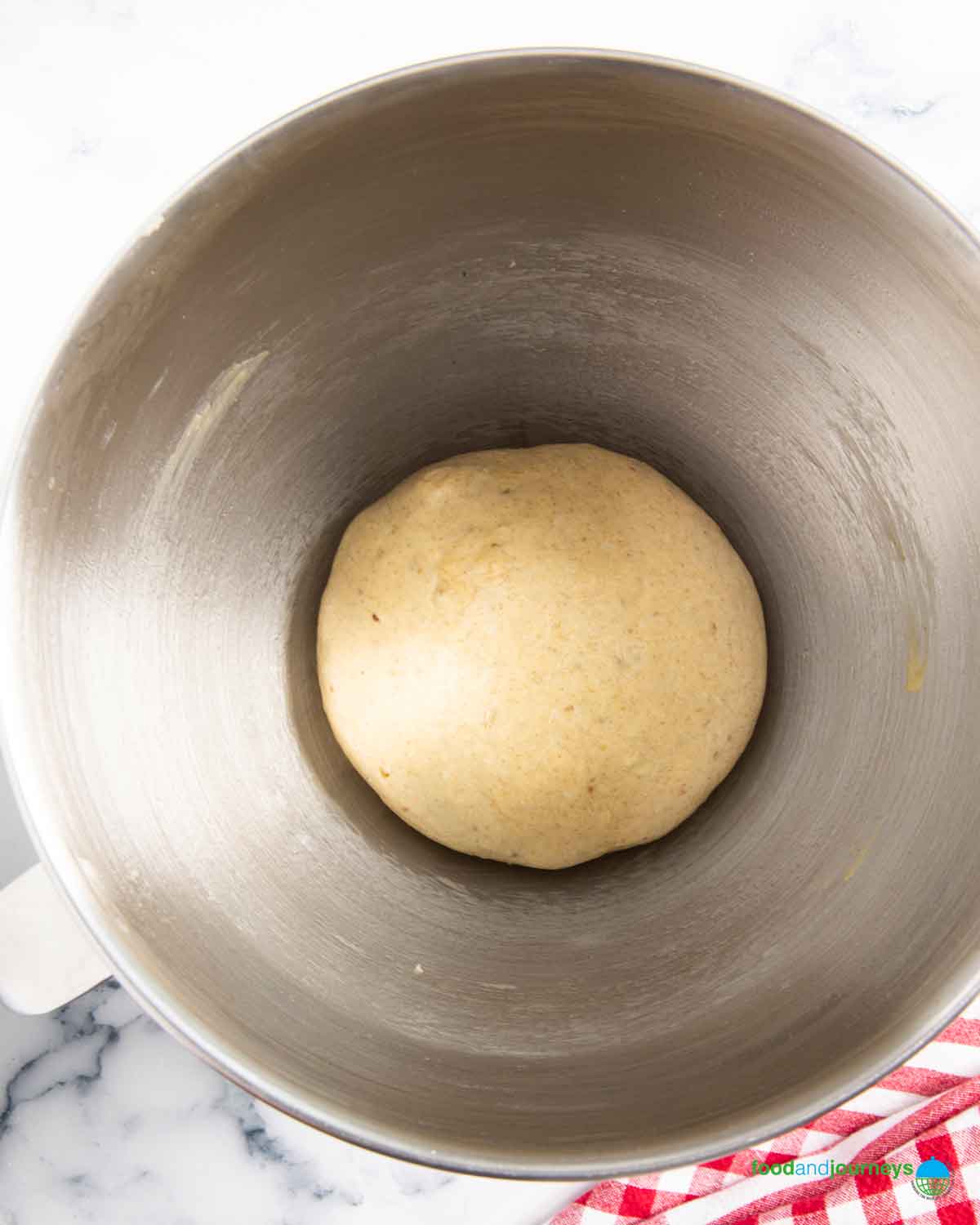
Cover with a clean kitchen towel until it doubles in size (it typically takes me an hour).
Transfer it to a countertop and form a loaf about nine to ten inches long.
Place your Swedish limpa bread dough on a baking tray lined with parchment paper.
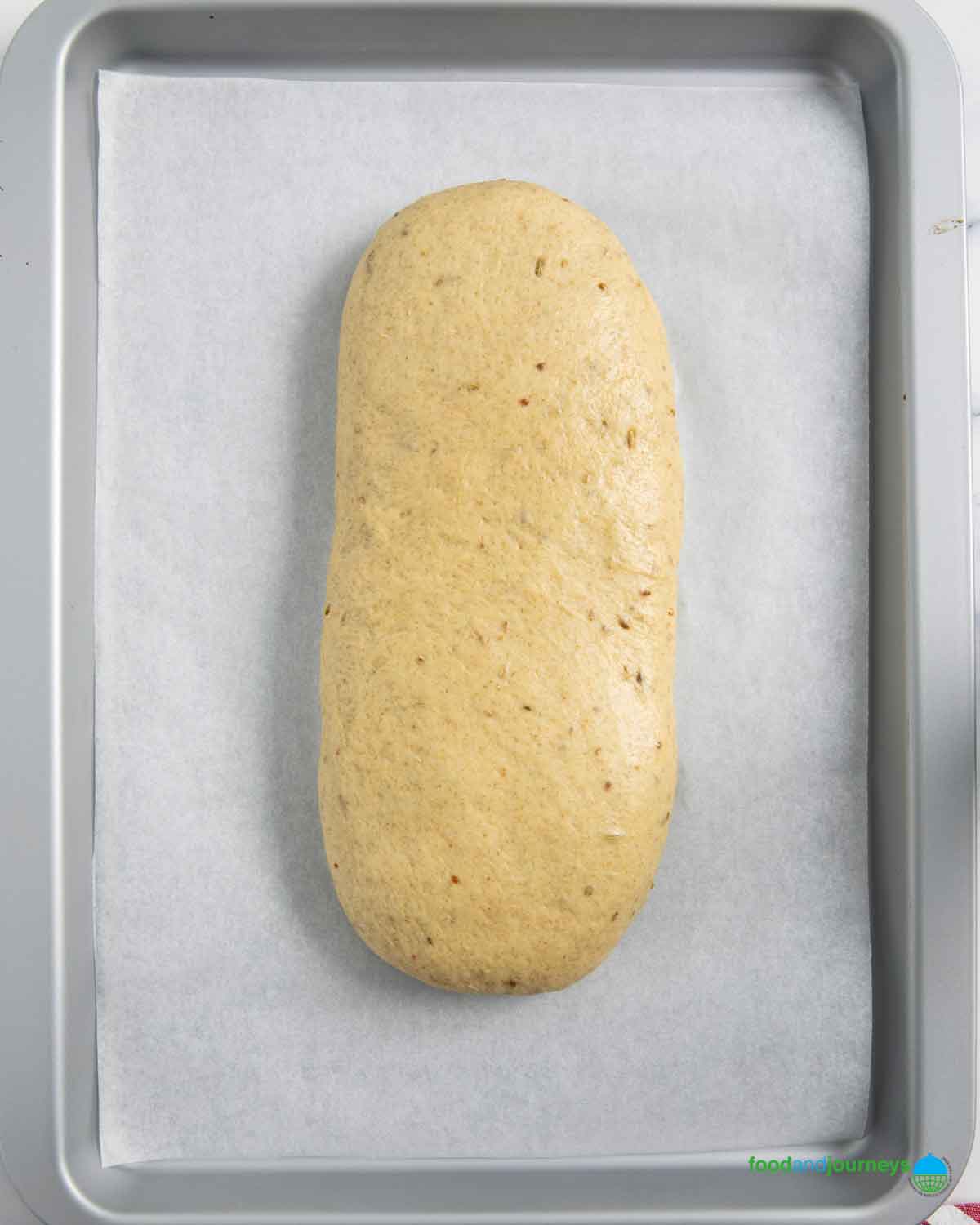
Cover with a towel until it expands to about twice its size (about forty-five minutes).
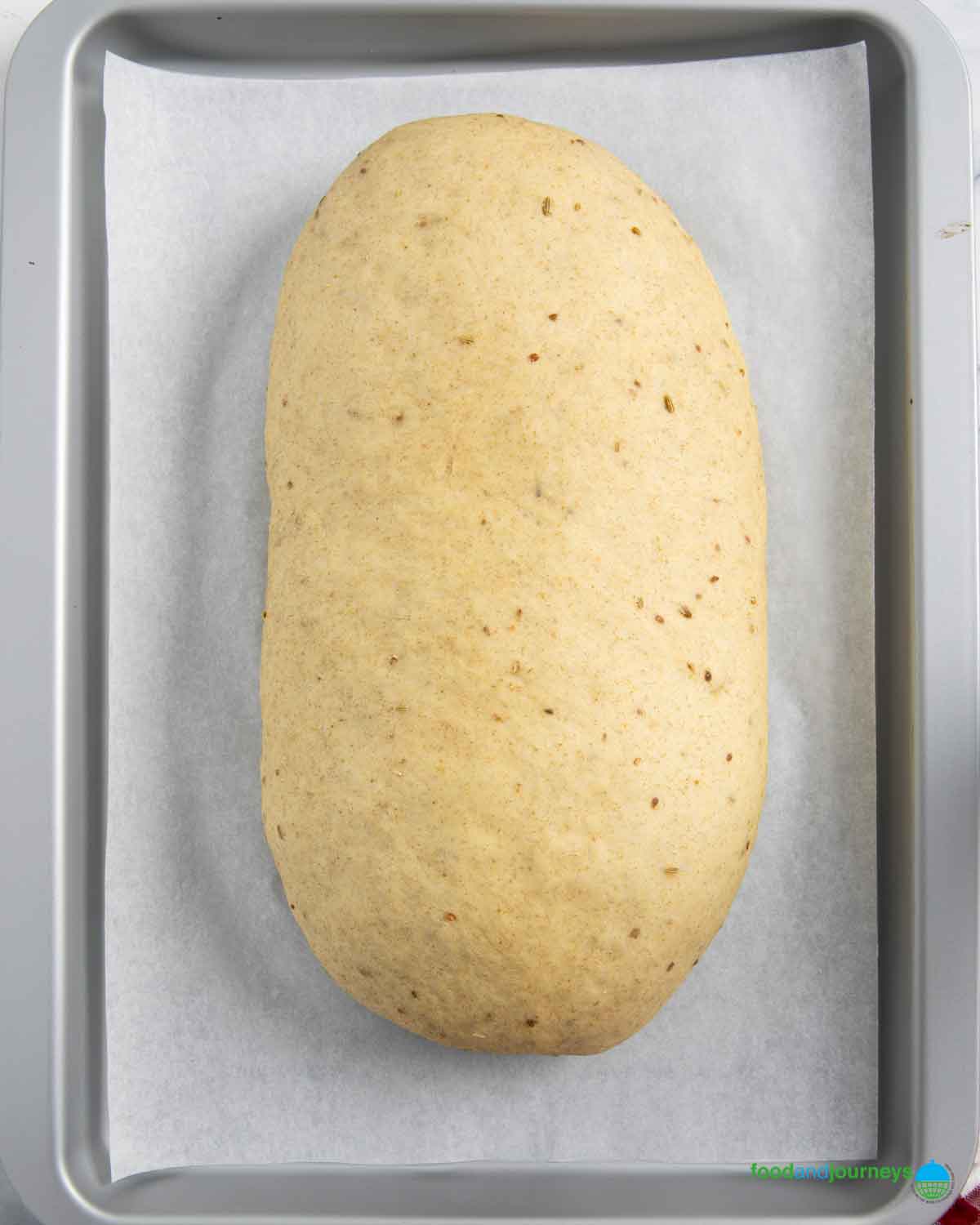
Preheat your oven to 180°C (350°F).
Place your limpa bread in the lower part of the oven for about thirty to thirty-five minutes — or until it turns brown.
When you remove it from the oven, use a pastry brush to glaze the top with syrup.
Set aside for a few minutes to cool.
Your Swedish limpa bread is now ready for slicing — and serving!
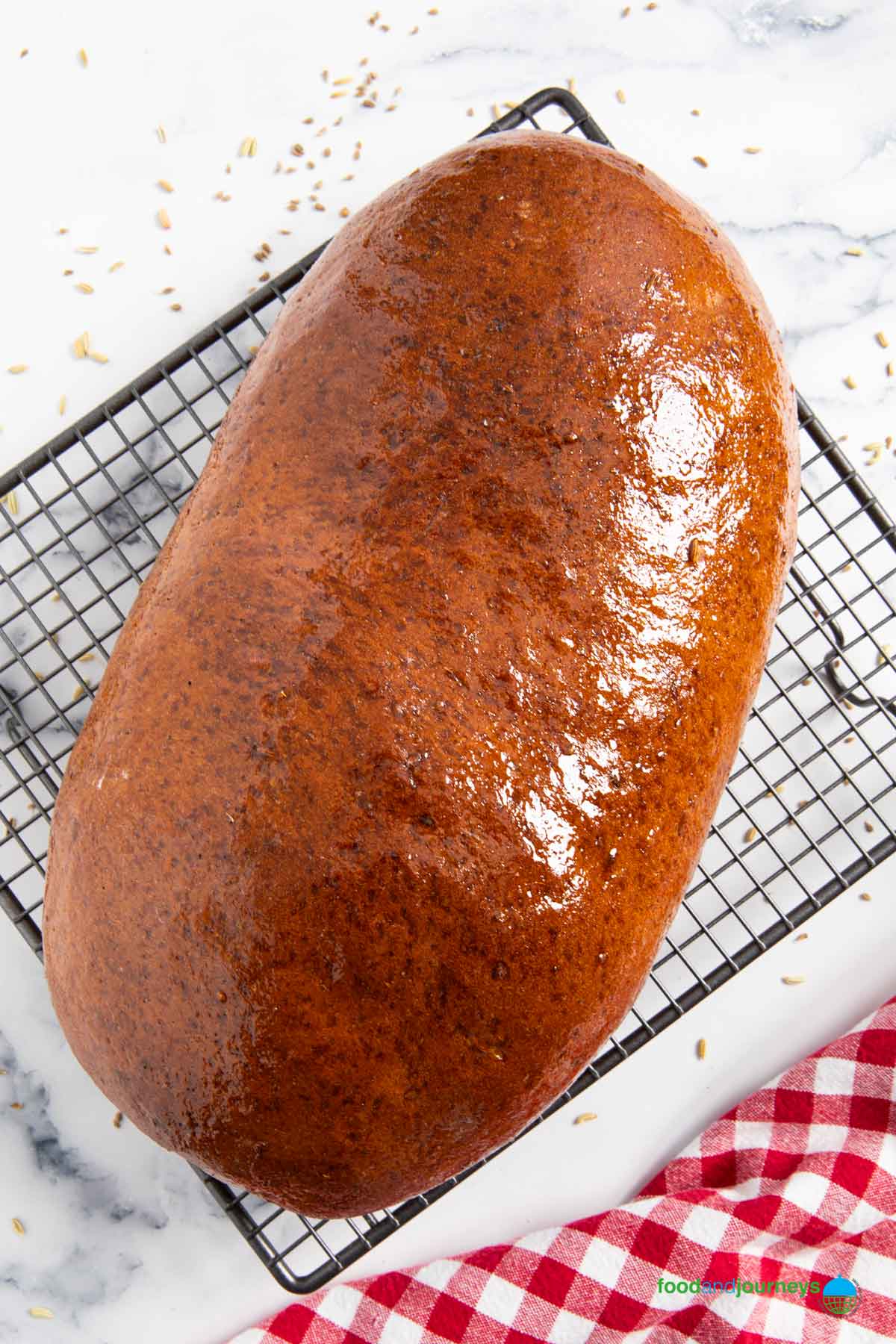
Helpful tips
- For maximum flavor and aroma of the seeds, ensure you only crush them, not ground them. If you don’t have a mortar and pestle, you can use a rolling pin to roll over the seeds (crushing them in the process).
- You can also place the dough in a loaf tin if you prefer an old-fashioned-formed loaf bread. Just remember to grease the tin with a bit of butter and a dust of flour.
- Remember to lightly dust the limpa dough with flour when forming it into a loaf.
- If you use a loaf tin, remove your Swedish limpa bread from it before brushing the top with syrup.
- If you think brushing the top with syrup is too much, mix it with equal parts water — then apply the glaze. Some people prefer to skip the glaze, but I think it gives sirapslimpa a deeper flavor. Feel free to experiment with it.
Recipe variation
- Golden syrup. It’s an excellent substitute for Sweden’s dark syrup. If you don’t have it, use any syrup that you can purchase in your area.
- Caraway seeds. You can add them to the anise and fennel seeds or skip them all.
- Water. Instead of milk, you can combine plain water with butter and syrup.
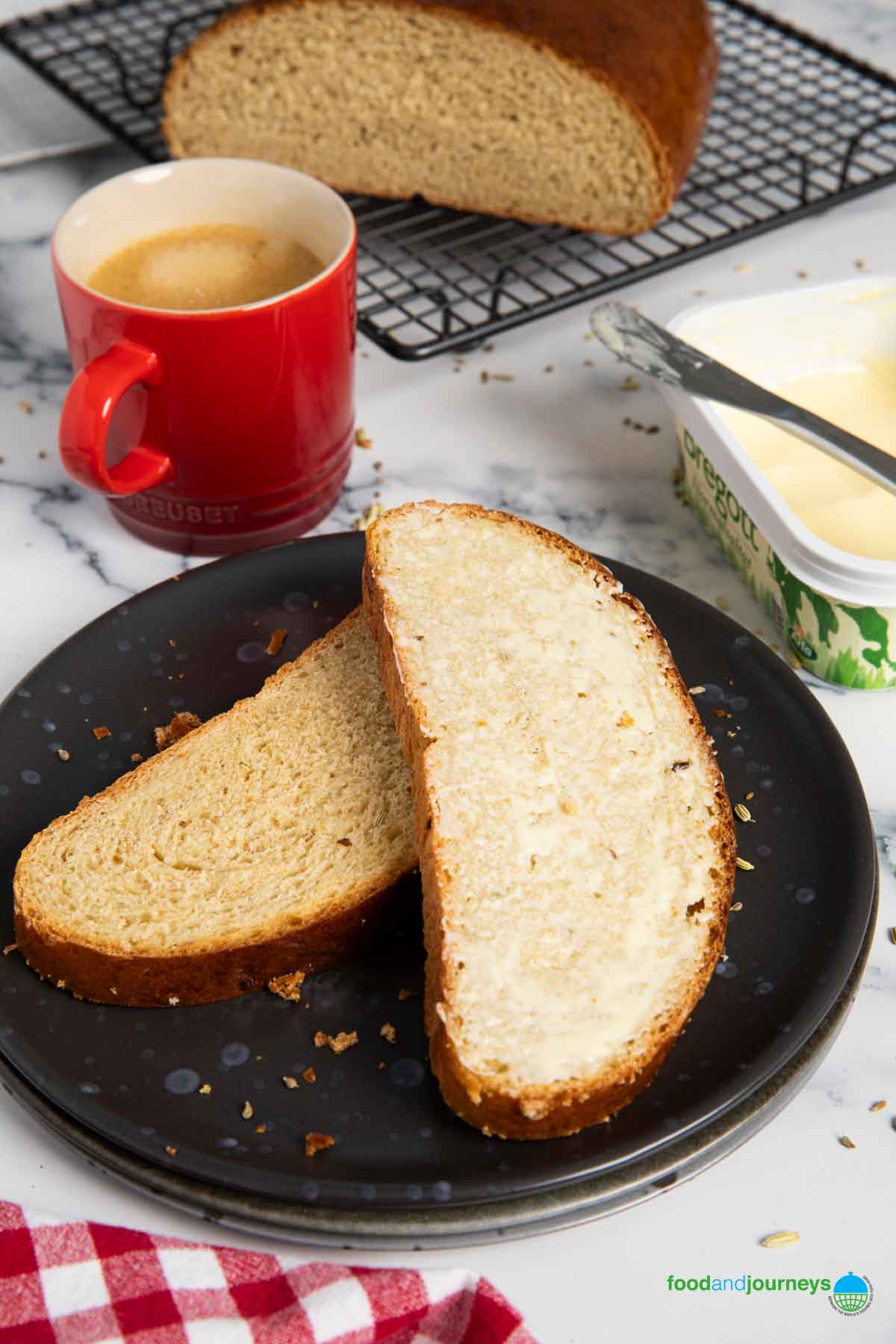
Serving suggestions
Whether you enjoy it fresh from the oven or toasted the next day, this traditional limpa bread goes beautifully with sweet and savory dishes.
Below are some of the best ways to enjoy it, inspired by authentic Swedish flavors and popular recipes from this blog.
Savory Pairings

Kalops (Swedish beef stew) – a traditional stew flavored with allspice, this hearty dish is ideal for dipping slices of sirapslimpa, soaking up the rich sauce.
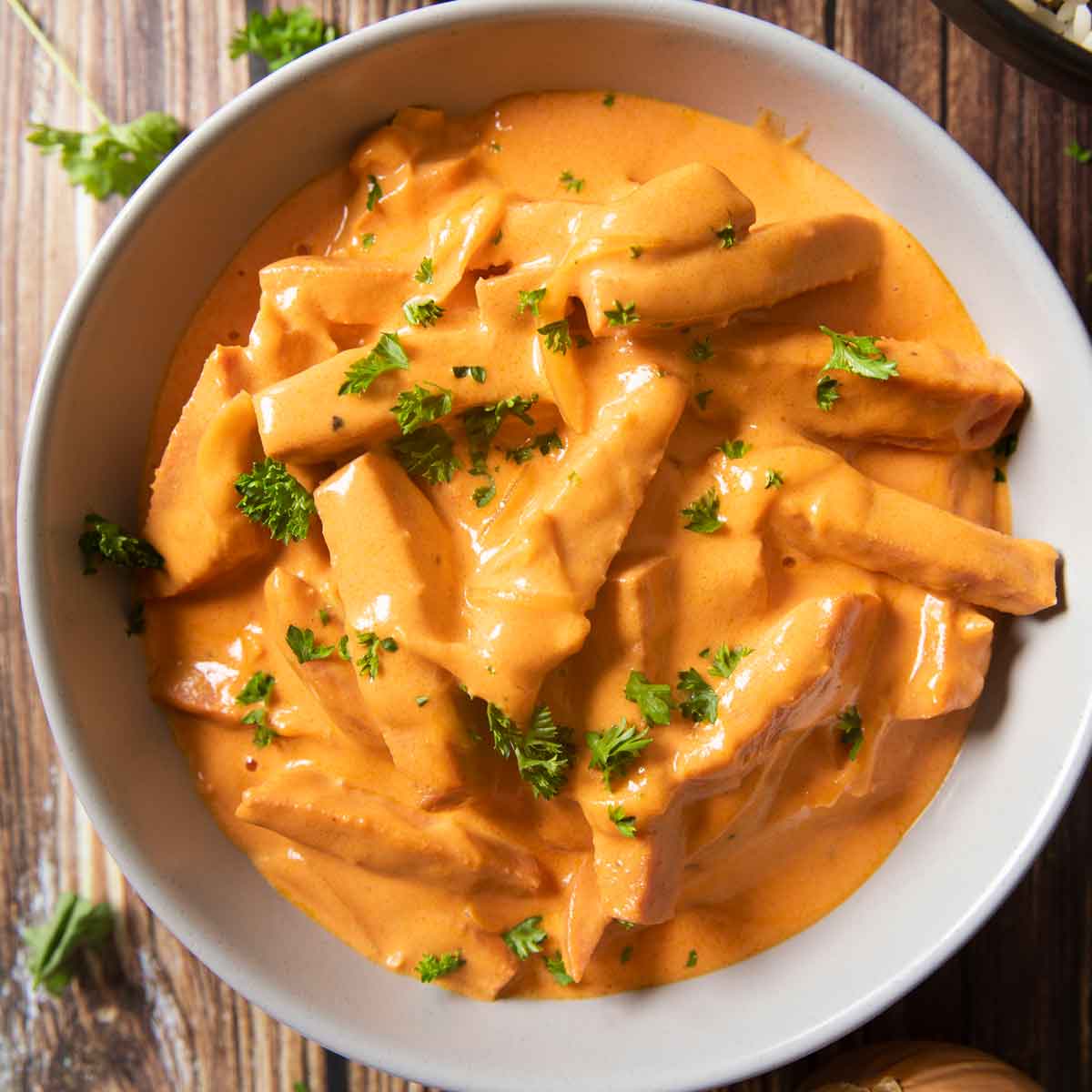
Korvstroganoff (Swedish sausage stroganoff) – a creamy and quick weeknight dish that pairs well with the subtle sweetness of limpa, balancing flavors beautifully.
Cheese & Sides

Swedish Cheese Pie (Västerbottenostpaj) – a creamy, cheesy, nutty pie that’s a staple during Midsummer celebrations. Serve slices of limpa alongside to complement the rich flavors.
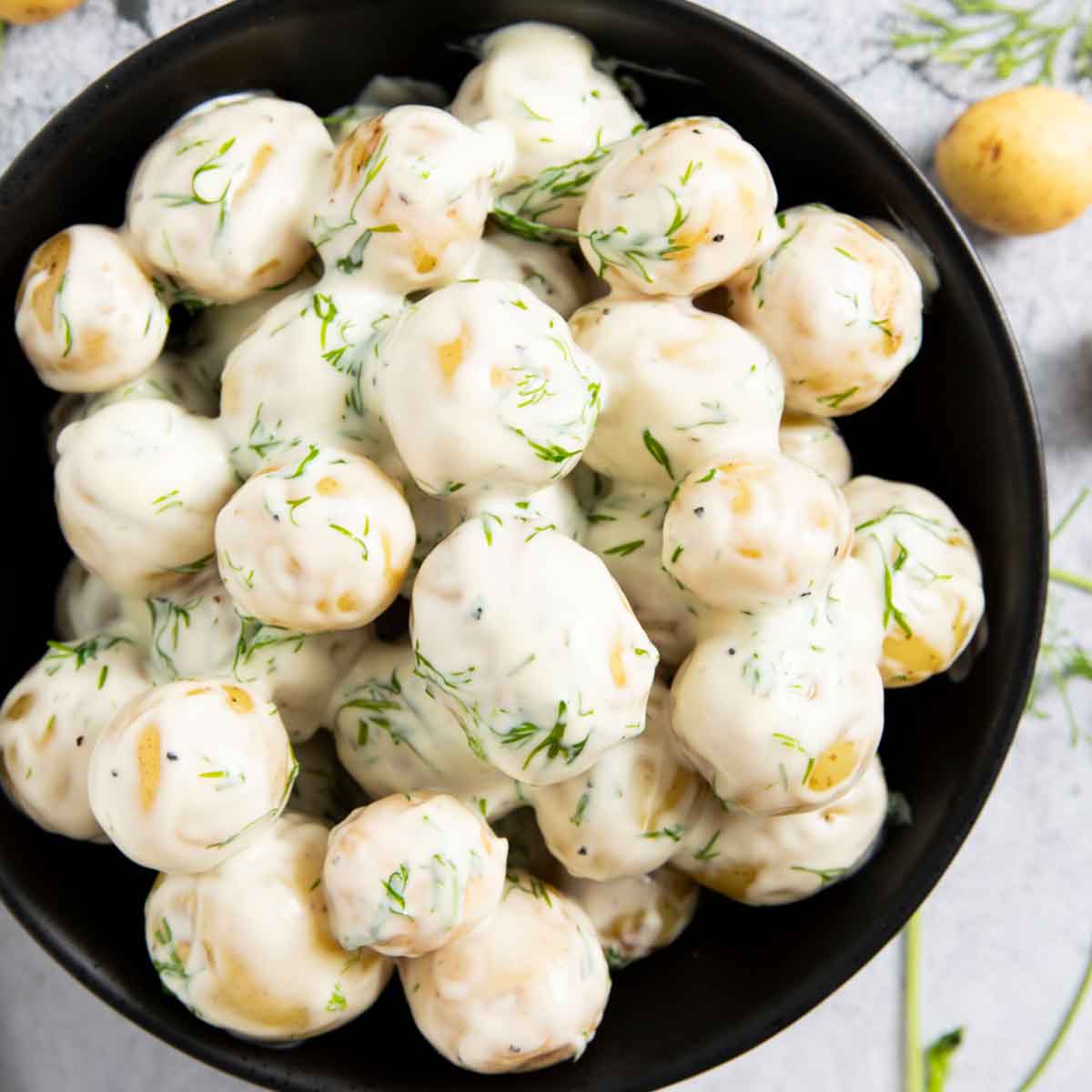
Swedish Dill Potatoes – new potatoes in a velvety dill cream sauce make a delightful side, with sirapslimpa providing a perfect side to enjoy the sauce.
For Your Sweet Tooth

Swedish Cinnamon Buns (Kanelbullar) – authentic cinnamon buns that offer a sweet contrast to the spiced notes of limpa, perfect for a traditional fika.

Swedish Saffron Cake (Saffranskaka) – a moist and soft cake, ideal for breakfast or dessert. Enjoy a slice after a meal that features limpa — to continue your Swedish culinary journey.
Nowadays, various regions of Sweden have their own (slightly different) versions of sirapslimpa — some sweeter, some denser — showing how it spread and adapted across the country.
But that’s absolutely fine because you have the traditional recipe for limpa bread right here! So, how about it? Try it, and let me know what you think! 🙂
OR GET MORE IDEAS FROM THIS LIST OF BREAD RECIPES FROM AROUND THE WORLD!
📖 Recipe
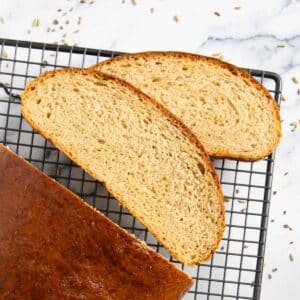
Swedish Limpa Bread Recipe (Sirapslimpa)
Equipment
Ingredients
- 250 ml milk (about 1 cup)
- 25 grams butter (about 3 & 1/2 tablespoons), plus more if using a loaf tin
- 80 ml syrup (about 1/4 cup), plus more for brushing on top
- 2 & 1/4 teaspoons yeast
- 330 grams bread flour (11.64 ounces or about 2 cups)
- 70 grams rye flour (2.46 ounces or about 1/2 cup)
- 1 teaspoon salt
- 1 & 1/4 teaspoons fennel seeds
- 1 & 1/4 teaspoons anise seeds
Instructions
- Mix yeast with 3/4 cup of warm water, then set aside until foamy.
- Combine butter, milk, and syrup in a small saucepan.
- Place over low heat until the butter melts — set aside to cool.
- Crush the fennel and anise seeds with a mortar and pestle.
- Combine the bread flour, rye, salt, and seeds in a stand mixer bowl.
- Once the yeast is ready, pour it into the bowl with the cooled butter and milk mixture.
- Mix and knead until you get a smooth dough.
- Place your Swedish limpa dough in an oiled bowl, then cover with a clean kitchen towel until it doubles (about 60 to 75 minutes for me).
- Uncover, transfer on a countertop, and form it into a loaf about 9 to 10 inches long.
- Place it on a baking tray lined with parchment paper, and cover it with a towel until it expands to about twice its size (it generally takes 45 minutes for me).
- Preheat your oven to 180°C (350°F).
- Uncover your limpa loaf and place it in the lower part of the oven for about 30 to 35 minutes — or until it turns brown.
- As soon as you remove it from the oven, use a pastry brush to glaze the top with syrup.
- Let cool for a few minutes, then serve — your Swedish limpa bread is now ready for slicing!
Notes
- Cook’s Tip: Make sure you only crush the seeds (instead of grounding them). It helps in bringing out their flavor and aroma more.
- Refer to the post for more tips and suggestions.





Leave a Reply